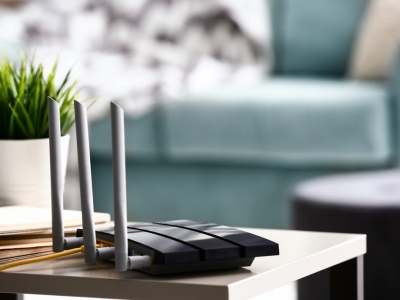The way we watch TV is being transformed. This post shows you how to bring the web to your television and what you’ll be able to watch.

Why would I want internet access through my TV?
The TV is firmly rooted as the heart of home entertainment. And while HD and 3D have been the headline grabbers over the last few years, there’s another revolution going on in telly technology that arguably offers broader appeal but isn’t talked about so much: internet TV.
According to one manufacturer, the latest generation TVs are becoming “superconnected media portals” allowing users to access the internet and much more. And it makes sense. For instance, why sit in front of a PC to catch up with programmes you’ve missed using, for example, the BBC iPlayer, when you can simply press a button on your TV’s remote and watch them on a bigger screen? There’s no need to mess around with connecting your laptop to your TV and everyone can join in without needing to huddle around a small PC monitor.
Will it cost me money?
You’ll need to budget for the initial hardware, whether it’s a TV, games console, or set-top box. Accessing online content via an internet TV or using a games console is essentially free as you wouldn’t need to subscribe to the services separately. The other cost to consider is what you’re paying for your internet – online video takes up a lot of bandwidth (network capacity). If your internet subscription limits the amount of data you are allowed to download each day or month, you may want to make sure your allowance is sufficient.
BT, Sky, and Virgin Media have a range of set-top boxes with internet access. These may require the installation of a satellite dish (in the case of Sky) or a fibre-optic broadband connection (in the case of Virgin).
How can I get it?
The first thing you’ll need to take advantage of internet TV is an internet connection. There have been stories of less-informed consumers buying such TVs and assuming that they somehow connect to the internet automatically via their antennas. That’s like buying a gas cooker and assuming that it comes with gas. A wireless connection is recommended if you want to avoid the hassle of running a cable from your TV to your internet router. You should also make sure that you have broadband – most users now have fast, ‘always-on’ internet connections at home rather than the old school dial-up modems that aren’t going to be suitable for internet tv. The easiest way to access online content on a TV is by using one of the latest internet sets. These offer a variety of online services you can access just by making a menu selection using the remote.
Alternatively, if you only bought a TV a few years ago and don’t want to replace it, you could buy a separate set-top box which, as well as giving you digital TV and radio, will also offer some internet services – although be warned that these tend to be no more than catch-up TV channels. Another option is a video games console. Finally, you could check out some home cinema systems, Blu-ray disc players, and standalone network media players which connect to your TV and enable internet access.
Can I do anything other than watch TV programmes?
Yes. As well as basic streaming video services such as iPlayer and YouTube, many internet TVs offer other web applications such as access to online video rental stores, Facebook and Twitter, music and radio services and photo albums. Some sets even connect wirelessly to your Wi-Fi devices so you can access content from a PC, smartphone or tablet, and watch it directly on the TV.
If everyone’s watching the TV through the internet will this slow the internet in general?
Service providers are well aware of the continuing increases in online traffic caused by internet TV watching and the greater use of mobile devices such as smartphones and laptops. Earlier this year, technology firm Cisco predicted that there would be more than 15 billion devices connected to the internet in four years’ time.
Whether the internet will be able to handle all that traffic remains a concern. But it’s worth noting that technologies are improving all the time. The rollout of fibre-optic is geared towards meeting these increased demands and reducing latency (the network lags that cause dropped or slow connections). And the ‘digital dividend’ – the frequency spectrum that is being freed with the switch to digital TV (see p20) – will boost broadband.
Will the picture quality remain?
If you want high-definition pictures then you’re going to need higher bandwidth and faster connection speeds. The general accepted kbit/s download rate needed to stream HD video is 3500 kbit/s. However, standard-definition television, which we have after all been happy with for years, can run on as little as 500 kbit/s. BBC iPlayer manages to offer HD content alongside its standard definition shows, and has sunk a great deal of investment into keeping up with increasing demand as more and more people get faster internet connections. The site also has a diagnostic tool that measures a user’s streaming rate.
Guest Post by Kashif Raza who writes on behalf of iMobilePost.com, a technology blog that offers reviews of top android, iphone and best ipad apps.










Comments